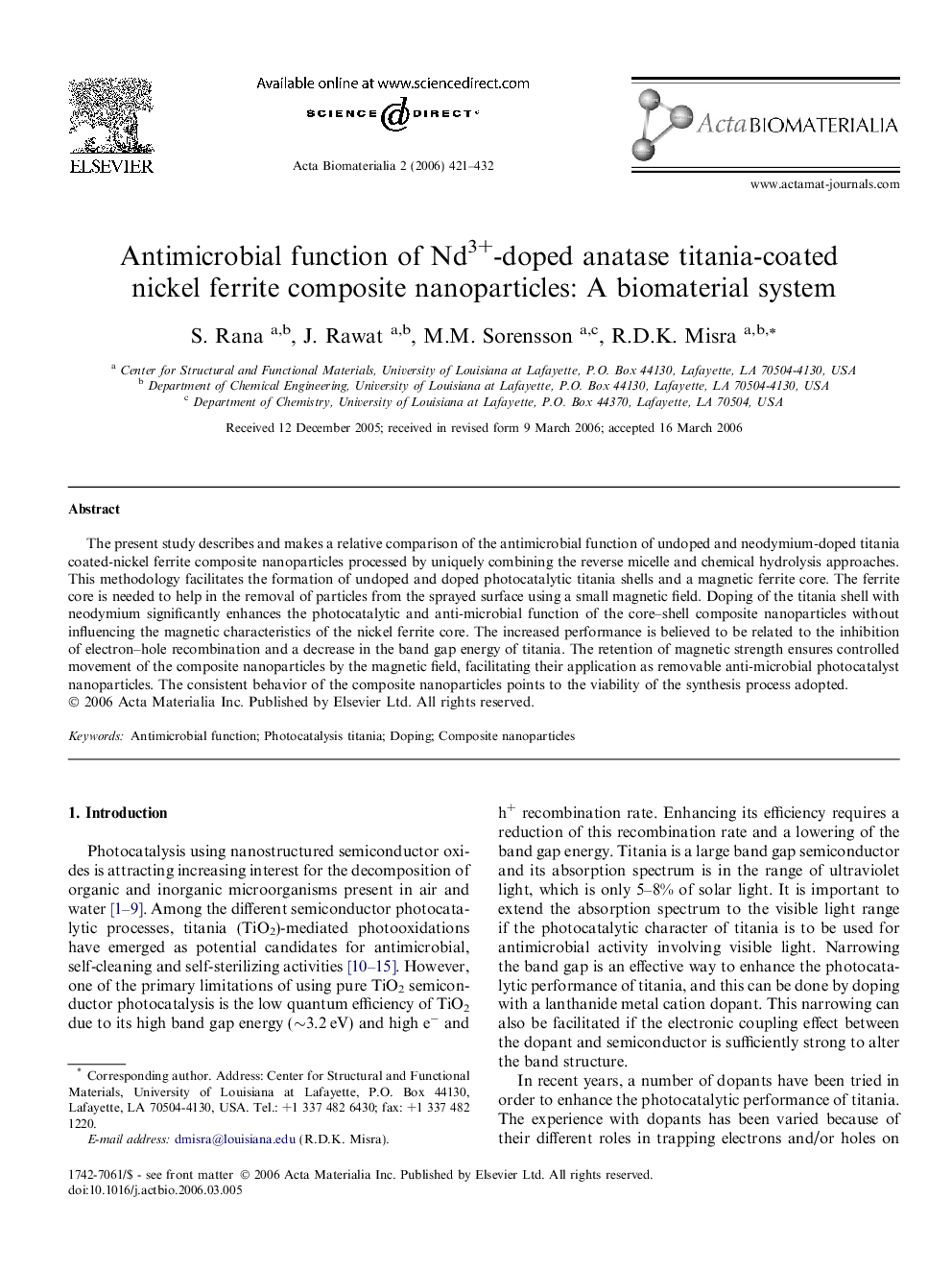| Article ID | Journal | Published Year | Pages | File Type |
|---|---|---|---|---|
| 2663 | Acta Biomaterialia | 2006 | 12 Pages |
The present study describes and makes a relative comparison of the antimicrobial function of undoped and neodymium-doped titania coated-nickel ferrite composite nanoparticles processed by uniquely combining the reverse micelle and chemical hydrolysis approaches. This methodology facilitates the formation of undoped and doped photocatalytic titania shells and a magnetic ferrite core. The ferrite core is needed to help in the removal of particles from the sprayed surface using a small magnetic field. Doping of the titania shell with neodymium significantly enhances the photocatalytic and anti-microbial function of the core–shell composite nanoparticles without influencing the magnetic characteristics of the nickel ferrite core. The increased performance is believed to be related to the inhibition of electron–hole recombination and a decrease in the band gap energy of titania. The retention of magnetic strength ensures controlled movement of the composite nanoparticles by the magnetic field, facilitating their application as removable anti-microbial photocatalyst nanoparticles. The consistent behavior of the composite nanoparticles points to the viability of the synthesis process adopted.
